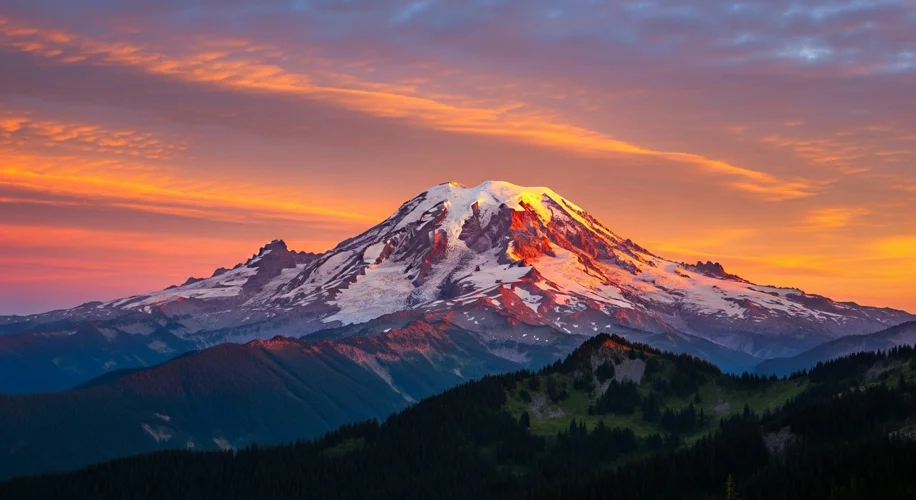I recently saw an incredible photo of a sunset over Mount Rainier in Washington. The way the light hit the mountain, casting these beautiful, layered colors across the landscape, was breathtaking. But beyond the visual beauty, this image sparked a lot of thoughts for me, as a climate scientist.
Mount Rainier is a place that holds immense natural power, with its glaciers and dramatic weather patterns. When we look at a landscape like this, especially through the lens of climate science, we’re not just seeing a pretty view. We’re seeing a story unfolding – a story about our planet’s health.
Let’s break down what those sunset layers might represent. The vibrant colors, the shadows, the very shape of the mountain we see today, are all influenced by long-term environmental processes. For decades, scientists like myself have been studying how climate change affects these vast natural systems. We look at things like glacial formations and how they’ve changed over time.
Glaciers, those slow-moving rivers of ice, are incredibly sensitive indicators of climate. As the planet warms, glaciers shrink. This isn’t just about losing ice; it has a ripple effect on everything from water supply for communities downstream to the ecosystems that depend on glacial meltwater. The changing patterns of snowpack and ice melt can also influence landslide risk and river flows.
When I see a photo like the one of Mount Rainier at sunset, I can’t help but think about the data. I think about the temperature records, the satellite imagery showing ice loss, and the projections for future changes. These visual moments serve as powerful reminders of the scientific evidence we’ve gathered. They show us, in a tangible way, the impact of shifts in our climate.
The landscape itself is dynamic. Erosion, weather events, and indeed, climate change, all contribute to shaping what we see. A clear day with a stunning sunset might, in another season, be a day of powerful storms or shifting snow. Understanding these cycles is key to understanding the larger climate picture.
For those of us who study the climate, these images are more than just pretty pictures; they’re visual data points. They connect the abstract concepts of atmospheric physics and climate modeling to the real, tangible world around us. It’s a call to action, rooted in observation and backed by science.
What can we do with this information? It starts with awareness. Understanding that our planet is changing, and that these changes are visible in places like Mount Rainier, is the first step. It encourages us to support science-based policies, make informed choices in our own lives, and engage in conversations about creating a more sustainable future. The beauty of a sunset reminds us of what we stand to lose, and what we have the power to protect.

